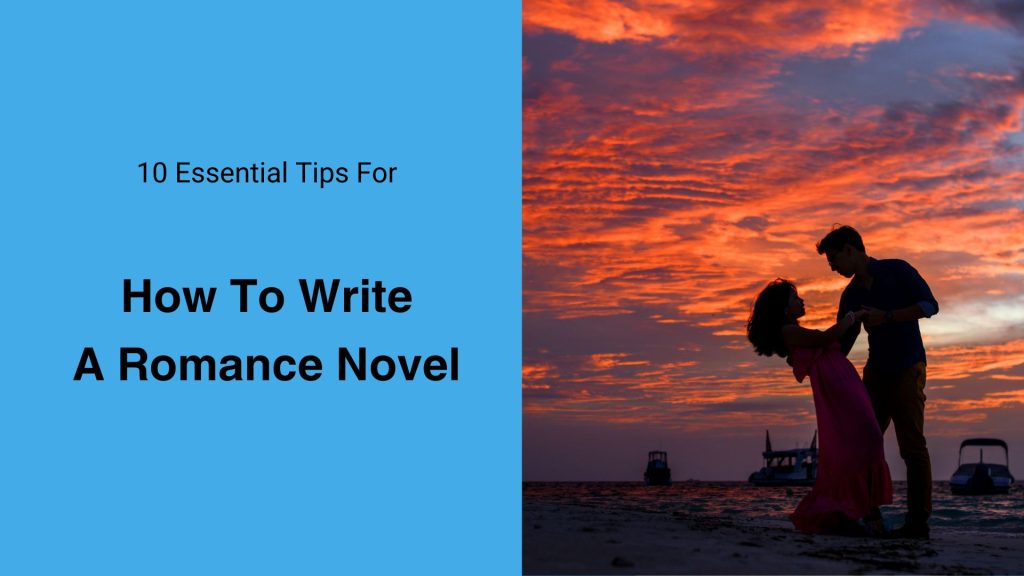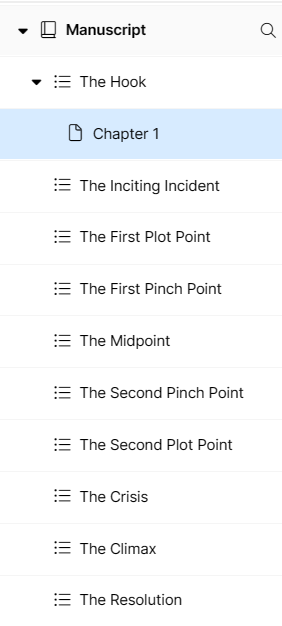How To Write A Romance Novel – 10 Essential Tips

It’s fair to say that there are no “easy” fiction genres to write. Each genre has its challenges, and romance novels are no exception. Romance requires deep character development, well-thought-out conflicts, and the ability to convey emotions. If you struggle with the genre, you’re in the right place. Today, I’ll show you how to write a romance novel with these 10 essential tips. So, let’s get started.
Below, you’ll learn to:
- Create Emotional Resonance
- Have Character Flaws
- Action Based Dialogue
- Write A “Magnetic” Antagonist
- Leverage Forbidden Love
- Develop Dynamic Love Triangles
- Surprise With Unexpected Gestures
- Utilize Flashbacks
- Use Symbolism
- Envoke More Scences
I will break down each tip mentioned above in greater detail and go over what it can do to help you craft a better love story for your book. I’ll also cover some common pitfalls to avoid when using these tips and review some examples. Ready? Good.
How To Write A Romance Novel (And Do A Good Job)
If you only accomplish two things when you sit down to write romance fiction, you’ll want them to be strong characters and an authentic emotional tension. If you can do that, you’re well on your way to writing a good romance novel.
The tips below will help you develop characters readers can emotionally connect with and feel invested in their journey. As well as create unique personalities, backgrounds, and motivations for your characters, allowing them to grow and evolve throughout the story.
Beyond characters, we’ll also cover creating obstacles and challenges that build emotional tension and anticipation to keep readers engaged and drive the narrative. Without further ado, here are your 10 essential tips.
10 Tips For Writing A Romance Novel

Emotional Resonance
Infusing your narrative with emotions that resonate with readers is a goal for all writers, but it’s crucial to a love story. Make your reader laugh, cry, and experience the highs and lows of love alongside your characters. While it’s hard to give a single piece of advice to achieve this, I have a few important suggestions.
You must ensure that emotional moments arise naturally from the characters’ experiences and personalities rather than forcing sentiments in. If emotions are forced or insincere, the story may come off as melodramatic or fail to engage readers in a natural way.
Build your scenes up to an emotional climax within the narrative. Yes, the character is upset, elated, or let down… But why? Give your readers context for the feelings behind your most charged scenes, and they’ll be more invested.
Ideally, your readers will know how and why an event may affect a character a certain way before it even happens. Set the stage first, and remember the ride makes the destination special.
Character Flaws
We’ve all heard the saying, “Nobody’s perfect,” and it’s true. So, your characters shouldn’t be either. Create characters with flaws and imperfections. This helps make them more realistic and relatable, and watching them overcome challenges adds depth to the romantic journey.
But balance is key here – Perfect characters aren’t good, but adding flaws for the sake of doing it isn’t much better. Instead, aim for relatable flaws that contribute to their growth without overshadowing their positive qualities. Everyone has good and bad qualities, and exploring this dichotomy greatly enriches a story.
Action Based Dialogue
In this case, action-based doesn’t refer to fight scenes and explosions. What I mean by this is the words you choose after a line of dialogue. Again, conveying emotion is critical when writing a romance novel. So, it’s not uncommon to see repetitive lines such as “she said angrily or “he said happily” to get your point across.
Instead, employ action beats or subtle cues within the dialogue to indirectly indicate the characters’ feelings. Some examples I like are:
- He grinned, lifting an eyebrow.
- She whispered, tracing circles on the table.
- He chuckled, taking a step closer.
- She sighed, gazing out the window.
- He murmured, absentmindedly playing with his tie.
- She snapped, crossing her arms.
- He smirked, tapping a pen against the desk.
- She teased, a playful glint in her eyes.
- He mumbled, avoiding eye contact.
- She grumbled, shifting uncomfortably in her seat.
You can see how the action portion of the dialogue tag adds insight into how the character feels, even without context. This approach keeps dialog clear while providing depth of emotional states.
Being descriptive is good, but to the point is also important because you don’t want to be overly descriptive and become vague. An example of overdoing it could be things like “as diligently as a scientist in a lab on the brink of a breakthrough.”
Magnetic Antagonists
As mentioned, you want your “good” guys with flaws. But your “bad” guy needs a touch of good, too. At the very least, you should offer glimpses into the antagonist’s perspective. This helps to humanize them and provides readers with a more nuanced understanding of their actions, even if they’re disagreeable.
People often feel justified (right or wrong) in their actions. A compelling antagonist can add tension to a romantic plot and make resolutions more satisfying. So, be sure to give all your characters some depth and avoid those all-bad, black & white-style characters. Plus, who doesn’t love rooting for a lovable bad guy?
The LivingWriter AI Chat feature can be a great way to manage how much your characters on the more antagonistic side are being received.
Forbidden Love
Suppose you’re looking for ways to do something different and spice up your romance novel. I recommend exploring forbidden or unconventional romances. Such elements can add intensity to the story, whether it’s a taboo relationship or societal barriers.
And if you start thinking outside the box, this can be a pretty deep well of ideas to explore. For example, consider how a workplace romance could add complexity and external/internal challenges you wouldn’t find in any other dynamic.
This type of sub-plot can increase the depth of your romance as long as you build a solid foundation for the forbidden aspect and organically bring it into the work. When you do, your relationships become much more layered and elaborate.
Love Triangle Dynamics
Love triangles are somewhat common in romance novels, but that doesn’t mean you can’t use them – You’ve just got to do a good job. The appeal of these tropes is that they can increase intrigue and create very complex situations. That said, you want to be sure that each character has clear motivations and unique qualities.

Remember, you don’t want black-and-white “good and bad” characters. Readers should genuinely struggle with choosing the “right” partner. If you can achieve this and have three characters that readers are invested in, you can create genuine emotional dilemmas for your audience.
Unexpected Gestures
Have you ever read a romance novel and (even if you liked it) found it wasn’t that romantic? I have. When writing about two people falling in love, don’t neglect those sweet, goofy “I love you” moments that happen when you’re deeply in love.
Surprise your characters and readers with unexpected romantic gestures. It could be a grand declaration or a small, thoughtful act that leaves a lasting impact. You may want to avoid (or refresh) the more generic and stereotypical ideas, but the sky is the limit when it comes to proclaiming love.
Some examples could include having someone build a jar filled with written memories, inside jokes, and shared dreams. Perhaps a character writes a book of promises showing commitment to small, meaningful actions—or even remembering how someone likes their coffee.
What works best for your novel will depend on the love language you’ve woven into your characters. But don’t be afraid of passion, affection, and intimacy in your works – The hopeless romantics in us will appreciate it.
Flashbacks
We’re the sum of everything that’s ever happened to us, and this can sometimes be lost when it comes to fiction. We often have very clear visions of a character in the present and an idea of where we want them to go. However, diving into your character’s past helps reinforce the motivations, traits, flaws, and goals characters have in the present.
Perhaps the most potent way to do this is to utilize flashbacks. Strategically jumping back in time for crucial events can allow readers to experience them firsthand and significantly deepen emotional connections. For example, a charged flashback of a betrayal will paint a much clearer picture than several instances of “Micheal had trust issues because of previous relationships.”
A word of caution, though – Unless you’re going to run separate narratives set in different times (which is ok), consider using flashbacks sparingly. Jumping around in the narrative too often may disrupt the natural flow of your story or even become confusing.
Symbolism
Symbolism and motifs are literary tools that infuse depth and meaning into the narrative. They usually involve imbuing objects, actions, or concepts with more profound significance, allowing you to convey emotions and themes beyond surface-level storytelling.
Motifs, recurring elements or themes, create a thread of continuity throughout the narrative and scenes and reinforce central ideas. These are invaluable in romance, providing readers with nuanced layers of interpretation and enhancing the overall storytelling experience.
Here are a few general ideas of the concepts:
- Flowers:
- Symbolism: Different flowers can represent various emotions. For example, roses often symbolize love and passion, while forget-me-nots convey lasting affection.
- Motif: Use flowers as a recurring motif, incorporating them in significant scenes or moments to highlight emotional shifts in the relationship.
- Weather:
- Symbolism: Weather can mirror the characters’ emotions. A sunny day might represent happiness, while a storm could signify conflict or turmoil.
- Motif: Weave weather patterns throughout the story to emphasize the emotional atmosphere during key events or turning points in the romance.
It’s a simple concept but can often be challenging to execute well. So, let’s look at an example a bit deeper. Here is how you could weave a chess motif into a story.
- The Opening Move:
- Symbolism: The initial meeting or first date represents the opening move in a chess game. It sets the tone for the relationship and establishes the dynamics between the characters.
- Motif: Describe the scene akin to an opening move on a chessboard. Reference the careful consideration, anticipation, and potential for surprises.
- Strategic Moves:
- Symbolism: The characters’ actions and decisions mirror strategic moves in chess. Each move influences the unfolding romance.
- Motif: Use chess-related language to describe pivotal moments. Characters might discuss their feelings in terms of moves on a board, adding a unique layer to their communication.
- King and Queen Dynamics:
- Symbolism: The king and queen pieces can represent the male and female protagonists. Their movements and interactions echo the power dynamics in the chess game.
- Motif: Explore scenes where characters take on roles similar to the king and queen. Highlight moments where they protect, support, or sacrifice for each other.
- Checkmate as a Resolution:
- Symbolism: Achieving checkmate could symbolize overcoming obstacles or reaching a resolution in the romance.
- Motif: Build tension by introducing obstacles that require strategic solutions. When characters navigate challenges successfully, it can be likened to achieving checkmate in the game.
- Chess as a Shared Interest:
- Symbolism: A shared love for chess represents common ground and shared values between the characters.
- Motif: Integrate scenes where characters play chess together. Use the game as a backdrop for important conversations, allowing the moves on the board to reflect the ebb and flow of their relationship.
You can see how using symbolism and a motif can provide a unique and intellectual dimension to the romance and allow you to make subtle correlations between themes and events.
The Power of Scent
Scent plays a significant role in our day-to-day lives and our relationships. Therefore, it can be used to great effect in romantic storytelling. In my experience, it is one of the least expressed senses in the genre despite being one of the most powerful. So, I could not cover how to write a romance novel (and do a good job) without mentioning it.
Describing smells can make certain scenes more immersive for readers and provide descriptive depth. Something as simple as a signature perfume or the aroma of a shared meal adds a sensory layer to the romance, making it more memorable.
While it’s a powerful, underused tool, don’t go overboard. Your readers don’t need to know how every room a character walks into smells. This is best reserved for certain scenes where you can make use of describing the experience through all five senses.
Romance Novel Manuscript Outlines
If you find yourself having a hard time with the genre, there are some other tools I recommend. LivingWriter manuscripts offer a variety of manuscript outline templates, including Romance.

You provide a title and short description for your work and get a manuscript with the crucial plot points expressly for a romance novel.

The outline offers a framework to build your story within which you can be assured will help control the story’s pace. In this case, you’re only provided with the template and can craft your own story and characters using the tips above.
However, there are also AI manuscript outlines, and AI character-building features that can help generate unique ideas and offer story arcs and plot points even beyond the template. If you’re interested in seeing why LivingWriter is the best writing app for fiction, you can do so here – LivingWriter.com.
Conclusion
The romance genre certainly has a specific set of things you want to do well – Character development, conveying emotions, painting vivid pictures, and engaging readers in your story are all paramount. The 10 essential tips I’ve laid out in today’s article should give you a clear idea of how to write a romance novel and do a good job. Now, get out there and get to writing.